Marriage Rate in the U.S.: Geographic Variation, 2020
Family Profile No. 07, 2022
Author: Krista K. Westrick-Payne
This Family Profile, an update of previous profiles on the marriage rate (FP-17-25; FP-18-20; FP-19-22; FP-20-24), estimates adjusted marriage rates for the U.S. and each state for 2020. Please note, the standard 2020 ACS 1-year data products will not be released due to the impact from the COVID-19 pandemic on data collection and data quality (for more information click here). As such, the estimates in this report for the year 2020 were derived from NCFMR analyses of ACS 1-year Experimental PUMS data. We estimate the number of marriages occurring in the last year among unmarried women aged 15 and older and describe geographic variation. Because the standard 1-year estimates were not released, we do not include margins of error in the tables or figures as in prior profiles. For detailed information on the adjusted marriage rate from 2008-2020, see “Charting Marriage & Divorce in the U.S.: The Adjusted Marriage Rate” (Westrick-Payne, 2022).
U.S. Marriage Rate, 2020
- The marriage rate hit a 50-year low in 2020—there were 28.1 marriages per 1,000 unmarried women.
- 2 million women married in 2020, a decrease of about 200,000 marriages from 2019.
- These findings are consistent with administrative reports of fewer marriages in 2020 (Manning & Payne, 2021).
Figure 1. Women’s Adjusted Marriage Rate, 1970-2020
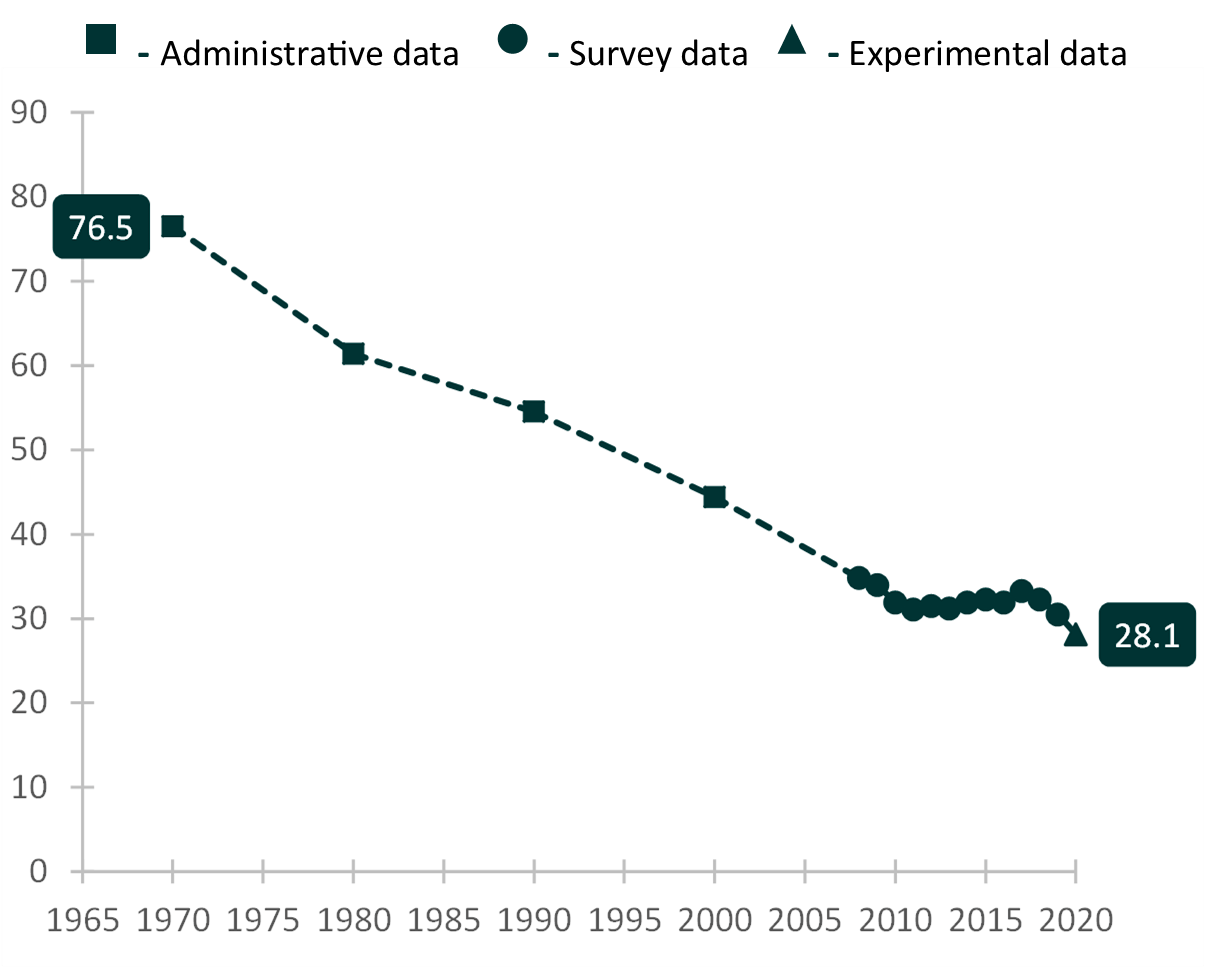
Five Highest and Lowest Marriage Rates, 2020
- Utah once again holds the top spot in terms of the marriage rate with nearly 46 marriages per 1,000 unmarried women in 2020.
- Montana now holds the lowest marriage rate. In 2020, there were about 19 marriages per 1,000 unmarried women in Montana.
Figure 2. Women's Highest and Lowest Adjusted Marriage Rates
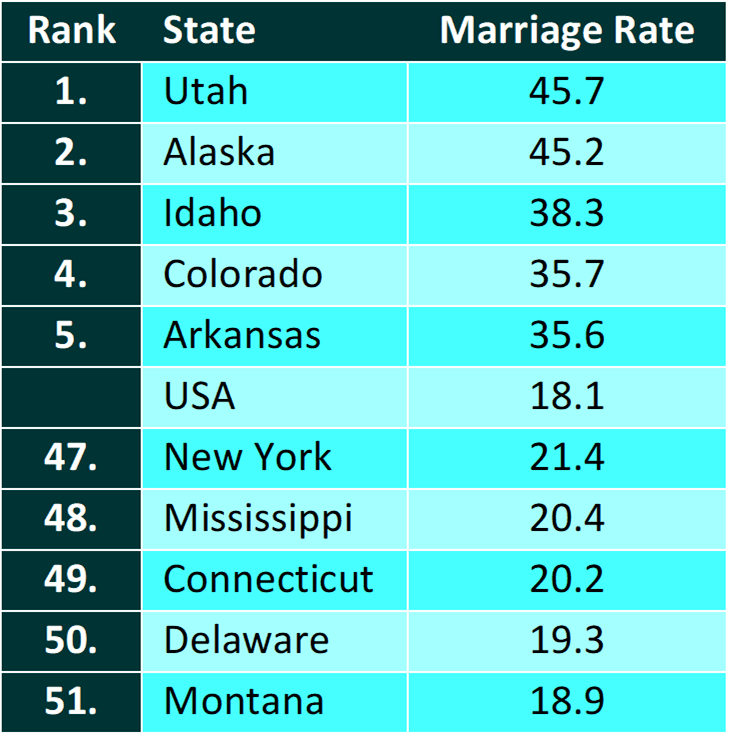
State Rankings and Geographic Variation in Marriage Rates, 2020
- The states with the highest marriage rates (making up the 4th quartile) in 2020 had rates of at least 31.2 marriages per 1,000 unmarried women aged 15 and older. Among the states in the top quartile, all are substantially above the national average (28.1 marriages per 1,000 unmarried women).
- The states with the lowest marriage rates (making up the 1st quartile) in 2020 had 25.2 or fewer marriages per 1,000 unmarried women.
Figure 3. State-Level Women’s Adjusted Marriage Rate by Quartile, 2020
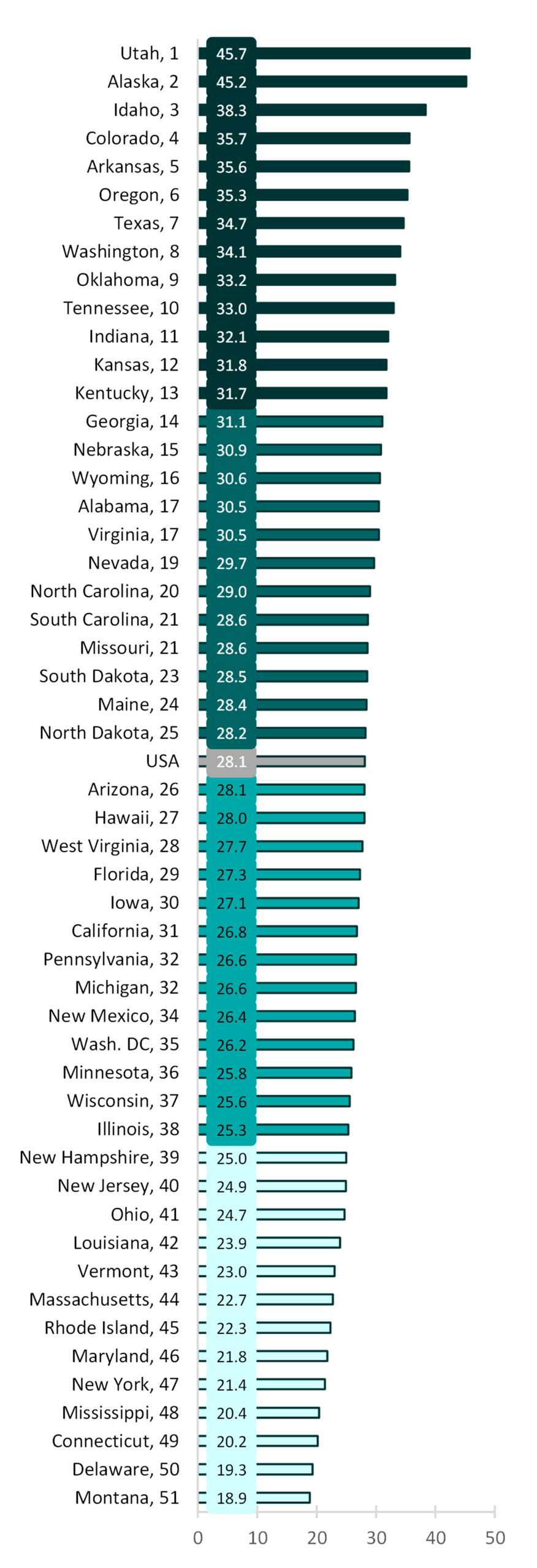
Figure 4. Geographic Variation of Women’s Adjusted Marriage Rate Among States, 2020
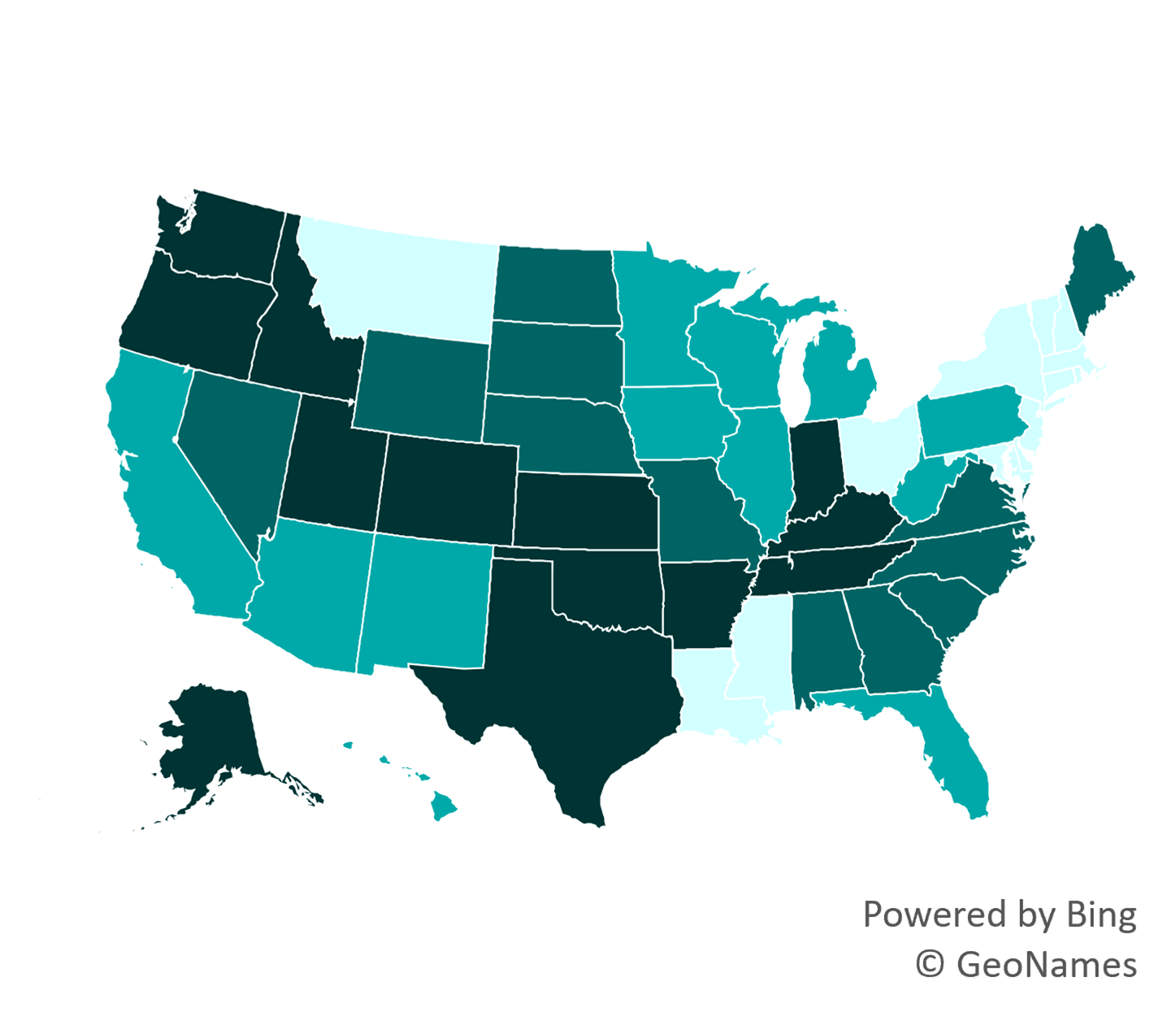
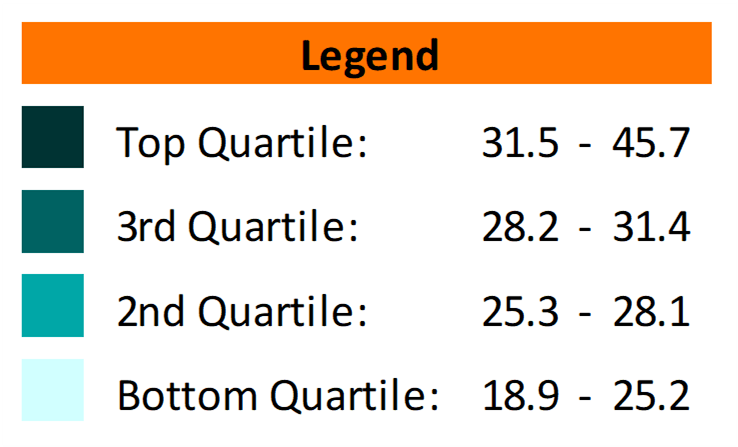
- Most states in the Western region of the country had high marriages rates (3rd or 4th quartile).
- Exceptions included Montana, New Mexico, California, Hawaii, and Arizona.
- Midwestern states exhibited marriage rates predominately in the middle two quartiles with the largest share found in the second.
- Ohio was the only midwestern state found in the first quartile.
- Southern states are represented in each quartile. The largest shares were found in the third and fourth.
- Nearly all states in the Northeast exhibited low marriage rates (1st quartile).
- Exceptions included Pennsylvania (2nd quartile) and Maine (3rd quartile).
Data Sources:
Clarke. S. C. (1995). Advanced report of final marriage statistics, 1989 and 1990. Monthly Vital Statistics Report, 42(12). National Center for Health Statistics. https://www.cdc.gov/nchs/data/mvsr/supp/mv43_12s.pdf
National Center for Health Statistics (1974). Summary report final marriage statistics, 1970. Monthly Vital Statistics Report, 23(2), Supp.1. U.S. Department of Health, Education, and Welfare. https://www.cdc.gov/nchs/data/mvsr/supp/mv23_02s1acc.pdf
National Center for Health Statistics (1983). Advance report of final marriage statistics, 1980. Monthly Vital Statistics Report, 32(5), Supp. U.S. Department of Health and Human Services. https://www.cdc.gov/nchs/data/mvsr/supp/mv32_05s.pdf
National Center for Health Statistics (2001). Births, marriages, divorces, and deaths: Provisional data for January-December 2000. National Vital Statistics Report, 49(6), Associated Table 3. Department of Health & Human Services, Center for Disease Control and Prevention. https://www.cdc.gov/nchs/data/nvsr/nvsr49/nvsr49_06.pdf
U.S. Census Bureau (2020). American Community Survey, 2019 1-Year Estimates [Table B12001]. Retrieved from: https://data.census.gov/cedsci/table?q=B12001&lastDisplayedRow=18&table=B12001&tid=ACSDT1Y2019.B12001
U.S. Census Bureau (2020). American Community Survey, 2019 1-Year Estimates [Table B12501]. Retrieved from: https://data.census.gov/cedsci/table?q=B12501&lastDisplayedRow=10&table=B12501&tid=ACSDT1Y2019.B12501
U.S. Census Bureau (2021). American Community Survey, 2020 1-year Experimental PUMS
References:
Allred, C. (2019). Marriage rate in the U.S.: Geographic variation, 2018. Family Profiles, FP-19-22. Bowling Green, OH: National Center for Family & Marriage Research. https://doi.org/10.25035/ncfmr/fp-19-22.
Hemez, P. (2017). Marriage rate in the U.S.: Geographic variation, 2016. Family Profiles, FP-17-25. Bowling Green, OH: National Center for Family & Marriage Research. https://doi.org/10.25035/ncfmr/fp-17-25
Manning, W. D. & Payne, K. K. (2021). Marriage and divorce during the COVID-19 Pandemic: A case study of five states. Socius, 7, 1-3. https://doi.org/10.1177/23780231211006976
Reynolds, L (2020). Marriage rate in the U.S.: Geographic variation, 2019. Family Profiles, FP-20-24. Bowling Green, OH: National Center for Family Marriage Research. https://doi.org/10.25035/ncfmr/fp-20-24
Schweizer, V. J. (2018). Marriage rate in the U.S.: Geographic variation, 2017. Family Profiles, FP-18-20. Bowling Green, OH: National Center for Family Marriage Research. https://doi.org/10.25035/ncfmr/fp-18-20
Westrick-Payne, K. K. (2022). Charting marriage and divorce in the U.S.: The adjusted divorce rate. Bowling Green, OH: National Center for Family & Marriage Research. https://www.bgsu.edu/content/dam/BGSU/college-of-arts-and-sciences/NCFMR/documents/RBT/charting-us-marriage-rate-2008-2020.pdf
Suggested Citation:
Westrick-Payne, K. K. (2022). Marriage rate in the U.S.: Geographic variation, 2020. Family Profiles, FP-22-07. Bowling Green, OH: National Center for Family & Marriage Research. https://doi.org/10.25035/ncfmr/fp-22-07
Updated: 11/12/2025 10:09AM


